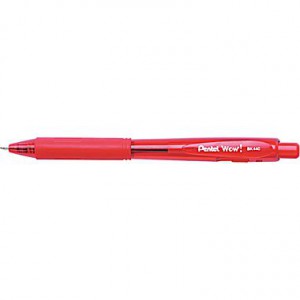If you have been exposed to even a moderate amount of WAC pedagogy, you have probably heard this advice: when you mark student work, use anything other than a red pen.
On the surface this seems reasonable, after all, no one likes to see their paper dripping red ink like a poor, wounded animal. But after a couple of hearings you may find yourself asking, as some of the City Tech WAC team did recently, is this just an old teachers’ tale? Is there evidence to back up the assertion that student reception of the same marks, grades, and marginal comments can be affected by the color they are written in? It turns out there are a number of researchers out there trying to answer these questions.
One 2012 study published in The Social Science Journal set out to test whether the use of red pens by instructors was viewed negatively by undergraduate-level students. Researchers Richard L. Dukes and Heather Albanesi provided participants with one of four marked and graded essays. These were actually just two essays, one at an A- and one a C+, in which the identical comments were either rendered in blue or red. Students were asked to assign their own grade to the essay and to assess the comments on particular values. While students tended to grade similarly and to rate the instructor comparably on for knowledgeability and organization regardless of the color of the comments, students who read essays marked in red were significantly more likely to rate the instructor as less nice and having less rapport with students.
Objectively, in an educational setting being nice is not as important as being knowledgeable. However, student-teacher rapport is an important and valuable thing and if a small adjustment like changing the color of a pen makes a difference it is worth considering. And a study published in the European Journal of Social Psychology in 2010 suggests a further reason for putting down the red pen: object priming.
Simply put, object priming proposes that when an object becomes closely associated with a concept then it has the potential to influence behavior. So, if an instructor associates red markings with harsh correction, he or she is more likely to make harsh corrections while using a red pen. The 2010 article by Abraham M. Rutchick, Michael L. Slepian, and Bennett D. Ferris includes the results of an experiment in which participants were given a writing sample to grade and either a blue or red pen with which to do so. Participants with red pens marked more errors than those with blue pens. The researchers hypothesize that this is a possible example of object priming, although they have plans for further research to confirm or disprove their theory.
Whether or not you are convinced by the object priming theory, a growing body of research suggests that students, instructors, or both can be negatively influenced by red ink. Choosing a different pen color is just one way that you can make the grading process more positive for all involved. For more instructor-focused tools to improve the grading experience, join us for the Effective Grading and Minimal Marking workshop this Thursday, November 19 at 1pm in Namm 1005.





